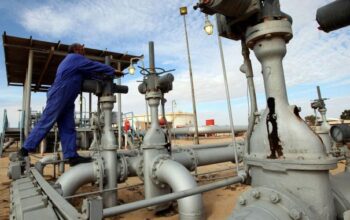The cut in production by the OPEC+ members (groups of oil exporting countries + Russia), in the last six days, resulted in an appreciation of prices by at least six dollars.
Negotiations for a barrel of Brent, oil that is the benchmark for exports from Angola, rose from USD 79.7 recorded between Friday and Sunday of last week, to USD 85.4 registered on Friday, a price that goes up to Sunday, and may change depending on the reopening of international markets.
This price of 85.4 dollars is also the highest level reached in the last 30 days.
The map released by Investing.com shows that between the 3rd and 13th of March, prices remained at around 80 dollars. Then, between the 14th and the 31st of March, there was a drop to the level of 70 dollars, where it remained until the OPEC+ group took the decision to cut production as a way of stimulating a rise in prices, which did the trick.
Average price
Although it was negotiated, at some moments over the period from March 3 to April 4, at the level of US$86, the average price calculated for a barrel of Brent oil, which Angola exports, was US$78.8.
This price is still above the price estimated in the Angolan General State Budget (OGE), which was US$75 per barrel.
PetroAngola’s vision
Crude Oil prices posted a third weekly gain boosted by OPEC+’s unexpected decision to cut combined production by a further 1.16 MBPD (million barrels of oil/day), despite ongoing concerns about a global economic slowdown. .
According to specialist PetrAngola, oil prices rose on Monday of this past week, following Sunday’s declaration of OPEC+, and at the end of the week they stabilized amid new economic data from the US and China that suggested a reduction in growth. economy in the post-pandemic scenario.
In the US, they explain, the latest weekly review of unemployment data showed a higher number of initial jobless claims than previously estimated and growth in the services sector was below expectations. In China, the March Caixin PMI reading suggested a post-pandemic growth slowdown.
These negative developments served to limit the rise in oil prices, despite further support from yet another stagnation in US stocks, as estimated by the Energy Information Administration.
The price of a barrel of oil has increased by around 26% since the low of mid-March, due to the series of bank collapses, with Brent oil trading above USD 85/bbl and WTI at USD 80/bbl.
![]()




